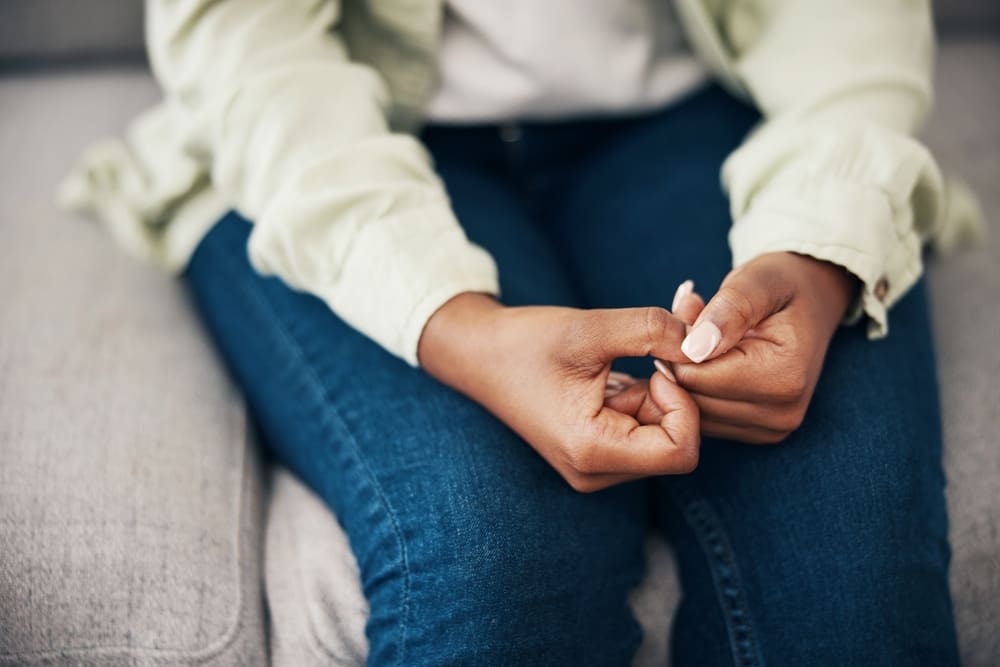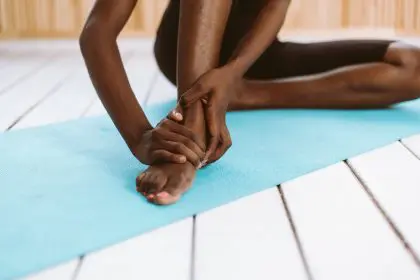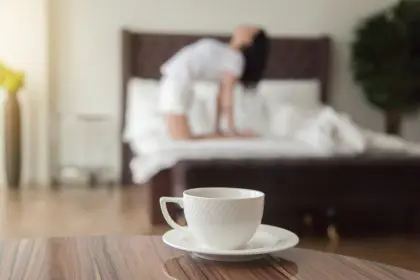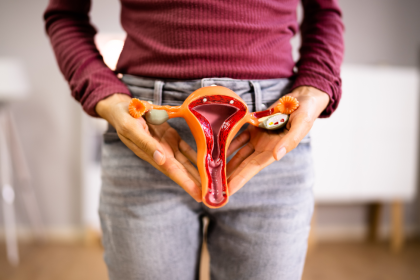That familiar tightness in your chest. The racing thoughts that won’t quiet down no matter how much you try to distract yourself. The constant feeling of impending doom that makes even simple decisions feel overwhelming. Anxiety has become the unwelcome companion for millions of people, showing up uninvited and often overstaying its welcome.
While medication certainly has its place in treating anxiety disorders, many people seek natural approaches either as complementary strategies or as first-line options before considering pharmaceutical interventions. The good news is that research increasingly supports the effectiveness of numerous natural anxiety management techniques that you can implement starting today.
What makes these natural approaches particularly valuable is that they address the root causes of anxiety rather than simply masking symptoms. They help rewire the brain’s stress response system, build resilience against future anxiety triggers, and create sustainable mental wellness without dependency or side effects. Let’s explore the most effective natural strategies that can transform your relationship with anxiety.
Breathing techniques that reset your nervous system
Your breath serves as a direct remote control for your nervous system, capable of shifting you out of fight-or-flight mode within minutes when used correctly.
When anxiety spikes suddenly, this powerful breathing pattern can rapidly lower stress hormones and heart rate. Inhale deeply through your nose, then take a second smaller inhale before exhaling fully through your mouth. This specialized breathing pattern triggers the parasympathetic nervous system, essentially hitting the reset button on your stress response.
Practice this technique by performing three consecutive physiological sighs whenever you feel anxiety rising. The effects are often immediate and measurable, with significant drops in heart rate and blood pressure. The beauty of this approach lies in its subtlety. You can perform these breaths in meetings, while driving, or in social situations without drawing attention.
For more persistent anxiety states, box breathing creates a rhythm that systematically calms your entire nervous system. Inhale for a count of four, hold for four, exhale for four, and hold for four before beginning again. This creates a visual “box” pattern of equal sides.
Practice box breathing for just three minutes daily to strengthen your nervous system’s relaxation response. With consistent practice, this technique becomes increasingly effective, often producing a deeper state of calm with each session. Many people find setting a daily reminder helpful for establishing this practice until it becomes automatic during anxiety-provoking situations.
Movement practices that release trapped anxiety
Physical movement serves as one of the most effective natural anxiety treatments, working through multiple biological pathways simultaneously to reduce tension and calm the mind.
Walking specifically for anxiety relief differs from regular walking through its mindful component. Begin by acknowledging your anxious feelings rather than trying to suppress them. As you walk, focus on the physical sensation of your feet connecting with the ground with each step. Notice the rhythmic pattern of your breathing naturally synchronizing with your movement.
The effectiveness of this practice comes from the bilateral stimulation of alternating left-right movement patterns, which helps process emotional material similar to EMDR therapy techniques. Just 10 minutes produces measurable reductions in anxiety by burning excess stress hormones while engaging the brain’s regulatory mechanisms.
Progressive muscle relaxation targets the physical manifestations of anxiety stored in your body. Starting with your feet and working upward, deliberately tense each muscle group for five seconds, then release completely for 10 seconds, noticing the contrast between tension and relaxation.
This practice works by breaking the chronic tension patterns that both result from and contribute to anxiety. Many people are shocked to discover how much tension they unconsciously carry in their bodies. Regular practice helps you recognize tension earlier and release it before it escalates into full anxiety. This technique works particularly well before bed to prevent anxiety-related insomnia.
Nutritional approaches to a calmer mind
What you eat significantly impacts your anxiety levels through effects on neurotransmitters, inflammation, and blood sugar regulation.
Unstable blood sugar triggers physiological responses nearly identical to anxiety, including racing heart, sweating, and irritability. Eating protein with each meal stabilizes blood sugar levels, preventing these false anxiety signals. Adding healthy fats further slows digestion and creates sustained energy without crashes.
A simple approach involves ensuring every meal and snack contains protein, healthy fat, and complex carbohydrates. Eggs with avocado toast for breakfast, yogurt with nuts for snacks, or salmon with sweet potatoes and vegetables for dinner exemplify this balanced approach. Many people find their anxiety symptoms diminish significantly within days of adopting this eating pattern.
Magnesium deficiency mimics anxiety symptoms, and unfortunately, stress depletes magnesium, creating a vicious cycle. Foods rich in magnesium include dark leafy greens, nuts, seeds, and dark chocolate. For supplementation, magnesium glycinate provides excellent absorption with minimal digestive effects.
The calming effects typically emerge within weeks of correcting a deficiency, though some people notice improvements sooner. Evening supplementation often improves sleep quality simultaneously, addressing another common anxiety trigger. As with any supplement, consulting healthcare providers ensures appropriate usage for your specific situation.
Mindful approaches beyond basic meditation
While traditional meditation helps many, other mindfulness approaches may prove more accessible and effective for those with anxiety.
This simple mindfulness exercise interrupts anxiety spirals by redirecting attention to the present moment. When anxiety strikes, name three things you can see, three sounds you can hear, and move three parts of your body. This engages multiple senses simultaneously, making it particularly effective for severe anxiety moments.
The technique works by activating the prefrontal cortex, the brain’s rational thinking center, which helps regulate the amygdala, your brain’s fear center. With practice, this becomes an automatic response that prevents anxiety from escalating. The simplicity of this approach makes it accessible even during intense anxiety when more complex techniques might feel overwhelming.
For those plagued by constant worrying, deliberately scheduling worry time paradoxically reduces anxiety. Set aside 15-30 minutes daily specifically for worrying. Outside this designated time, when worries arise, note them briefly and postpone them until your scheduled worry session.
This technique works by containing anxiety rather than trying to eliminate it, which often backfires. The simple act of writing down concerns and assigning them a specific time reduces their perceived urgency and intrusion into other parts of your day. Many people find their scheduled worry time naturally becomes shorter as the practice continues, often requiring only 5-10 minutes after several weeks.
Social connection as anxiety medicine
Human connection provides powerful anxiety relief through multiple neurobiological pathways, yet it’s often overlooked in anxiety management.
Sharing your anxiety experience with trusted others activates co-regulation, a biological process where nervous systems positively influence each other. This doesn’t require therapy. Simply telling a friend “I’m feeling anxious today” opens the door to this powerful biological support system.
The key lies in choosing supportive people who respond with empathy rather than dismissal or excessive problem-solving. Even brief authentic connections reduce anxiety by releasing oxytocin, which directly counters stress hormones. Start small with minor vulnerability and gradually expand your comfort zone as you experience the benefits.
Establishing a regular exchange with someone where you each listen to the other without interruption, advice, or judgment creates a powerful anxiety management tool. Take turns speaking about whatever feels pressing for 5-10 minutes while the other person simply listens attentively.
This practice works through multiple mechanisms including emotional processing, perspective gaining, and feeling deeply seen and heard. Unlike casual conversations where we often filter thoughts, this structured exchange creates space for expressing anxiety-producing thoughts without fear of judgment, often revealing solutions simply through articulation.
Sleep practices that reduce anxiety sensitivity
Poor sleep dramatically increases anxiety vulnerability, creating a lower threshold for stress reactivity the following day.
The transition to sleep significantly impacts both sleep quality and anxiety levels. Begin reducing light exposure 90 minutes before bed, particularly blue light from screens which suppresses melatonin. During this time, engage only in calming activities that signal safety to your nervous system.
This extended wind-down works by gradually shifting your brain into sleep-conducive brainwave patterns rather than expecting an immediate transition from daytime alertness. The consistency of this routine also creates powerful sleep cues that strengthen over time, making falling asleep progressively easier despite anxiety.
This specialized breathing pattern effectively triggers the parasympathetic nervous system, inducing the relaxation necessary for sleep. Inhale quietly through your nose for a count of four, hold your breath for seven, and exhale completely through your mouth for eight. Repeat for just four cycles initially.
The extended exhale in this pattern activates the vagus nerve, releasing physical tension and quieting mental activity. While effective even for anxiety unrelated to sleep, its sedative effect makes it particularly valuable as part of your bedtime routine. Most people find it increasingly effective with consistent practice.
Creating your personalized anxiety management toolkit
The most effective approach to natural anxiety management combines multiple strategies tailored to your specific anxiety patterns, triggers, and preferences. Rather than trying everything simultaneously, introduce one new practice weekly, noting its effects before adding another.
Start with techniques addressing your most troublesome anxiety symptoms. If physical symptoms predominate, begin with breathing and movement practices. For racing thoughts, mindfulness approaches might provide your foundation. If anxiety spikes in specific situations, grounding techniques offer immediate relief.
Keep a simple record of which practices help most with different anxiety manifestations. Some work better for prevention, others for in-the-moment relief, and still others for recovery after anxiety episodes. This personalized understanding allows you to respond strategically rather than reactively as your relationship with anxiety transforms.
Remember that consistency with simpler practices typically yields better results than sporadic use of more complex approaches. Even five minutes of daily attention to anxiety management builds neurological pathways that strengthen your resilience against future anxiety triggers. With time, you may find yourself responding to potential anxiety situations with calm confidence rather than dread, creating a positive spiral of increasing emotional wellbeing.














